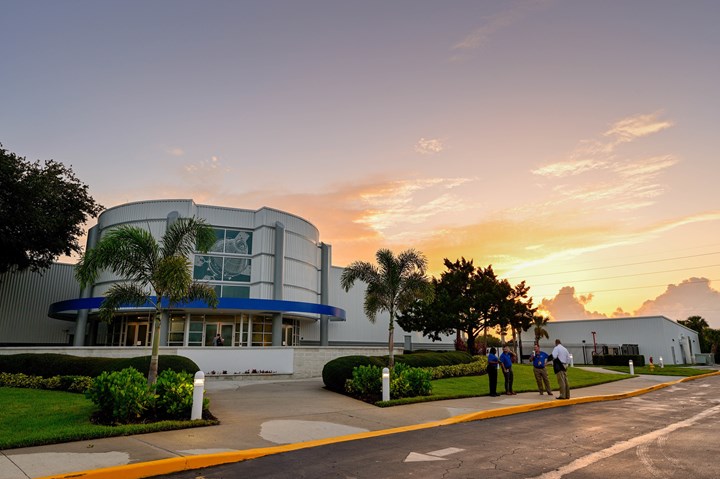Lockheed Martin opens new facility, expands Orion spacecraft production
The STAR Center provides space for the new production phase of Orion, allowing future Orion spacecraft, beginning with the Artemis III mission, to be built faster.

On July 15, Lockheed Martin (Bethesda, Md., U.S.) opened its Spacecraft Test, Assembly and Resource (STAR) Center. The STAR Center features business and digital transformation innovations that will expand manufacturing, assembly and testing capacity for NASA's (Washington, D.C., U.S.) Orion spacecraft program and ultimately, future space exploration.
Lockheed Martin currently assembles the Orion spacecraft for the Artemis I and II Moon missions at the nearby Neil Armstrong Operations and Checkout (O&C) building at NASA's Kennedy Space Center. The addition of the STAR Center provides space for the new production phase of Orion, allowing future Orion spacecraft — starting with the Artemis III mission — to be built faster.
“The STAR Center is the centerpiece of our commitment to build sustainable and affordable capabilities for NASA to send astronauts to the moon and eventually Mars,” says Lisa Callahan, Commercial Civil Space (Falls Church, Va., U.S.) vice president and general manager at Lockheed Martin Space. “We are using advanced manufacturing capabilities and digital-first technologies to speed production and improve quality to get Orion from factory to space faster than ever before.”
The STAR Center will reportedly enable Lockheed Martin to implement the latest digital transformation technologies, along with the company’s existing production expertise, in order to scale Orion production and deliver spacecraft more quickly.
Under Lockheed Martin’s production contract with NASA, the agency has committed to order Orion vehicles for six missions, with the potential to add another six through 2030.
Related Content
-
Cryo-compressed hydrogen, the best solution for storage and refueling stations?
Cryomotive’s CRYOGAS solution claims the highest storage density, lowest refueling cost and widest operating range without H2 losses while using one-fifth the carbon fiber required in compressed gas tanks.
-
Infinite Composites: Type V tanks for space, hydrogen, automotive and more
After a decade of proving its linerless, weight-saving composite tanks with NASA and more than 30 aerospace companies, this CryoSphere pioneer is scaling for growth in commercial space and sustainable transportation on Earth.
-
Plant tour: Middle River Aerostructure Systems, Baltimore, Md., U.S.
The historic Martin Aircraft factory is advancing digitized automation for more sustainable production of composite aerostructures.
















